…where east meets west
- Home
- Brief History
- The Greenwich Meridian
- Greenwich
(1675–1958) - Herstmonceux
(1948–1990) - Cambridge
(1990–1998) - Outstations (1822–1971)…
- – Chingford (1822–1924)
- – Deal
(1864–1927) - – Abinger
(1923–1957) - – Bristol & Bradford on Avon
(1939–1948) - – Bath
(1939–1949) - – Hartland
(1955–1967) - – Cape of Good Hope
(1959–1971)
- Administration…
- – Funding
- – Governance
- – Inventories
- – Pay
- – Regulations
- – Royal Warrants
- Contemporary Accounts
- People
- Publications
- Science
- Technology
- Telescopes
- Chronometers
- Clocks & Time
- Board of Longitude
- Libraries & Archives
- Visit
- Search
People: Annie Scott Dill Maunder (née Russell)
| Name | Maunder, Annie Scott Dill Maunder (née Russell) |
||
| Place of work | Greenwich | ||
| Employment dates |
1 Sep 1891 – 31 Oct 1895 | ||
| Jan 1916– 28 Feb 1921 |
|||
| Posts | 1891, Sep 1 |
Computer (resigned 31 Oct 1895) |
|
| 1916, Jan |
Volunteer |
||
| |
1919, Oct 1 |
Computer |
|
| 1921, Jan 1 | Volunteer (RGO7/266) |
||
| Born | 1868, Apr 14 |
||
| Died | 1947, Sep 15 |
||
| Family links | Married E Walter Maunder (Assistant) in 1895 | ||
| Known Addresses | 1891–1895 | 16 The Circus, Greenwich (now 16 Gloucester Circus) |
|
| 1896–1900 | 18 Walerand Road, Lewisham | ||
| 1900–1906 | 86 Tyrwhitt Road, Brockley | ||
| 1908–1911 | 69 Tyrwhitt Road, Brockley | ||
| 1911 | 38 Crooms Hill | ||
| 1913–1926 | 8 Maze Hill (now 38 Maze Hill) | ||
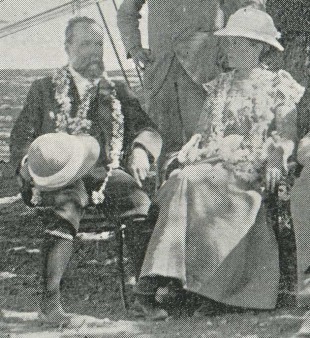
Annie Maunder with her husband E Walter Maunder in India in January 1898. Photo by JPG Smith (detail). From The Indian eclipse (British Astronomical Association)
Extra computers were all very well, but what Christie really wanted was more assistants. To this end, he therefore made the decision to experiment with employing ‘Lady Computers’. Only women who had graduated at a University Ladies’ College were considered. Four such assistants were taken on in 1890: a Miss Clemes, together with Miss Rix and Miss Furniss from Newnham College Cambridge and Miss Everett from Girton College Cambridge. All four began work on 14 April (RGO7/29). Clemes appears to have left very quickly and Furniss who resigned in 1891 was replaced by Annie Russell (RGO7/29), a contemporary of Everett’s at Girton. Although older and considerably better educated than the Boy Computers, their pay and conditions were the same. But unlike the boys who were generally still living with their parents, the Lady computers had to find and pay for their own accommodation. Like the other women, Russell was assigned to the Astrographic Department. A regular programme of taking photographic plates for the catalogue commenced in December 1891 and experimental measures of some of the photographs in 1893. In the meantime, the women were used from time to time to measure some of the solar plates. The earliest published Measures of position and areas of sun spots and faculae made by Russell (AR) dates from 4 September 1892. Although Everett, Rix and Russell all measured solar plates in 1892, only Russell is recorded as having measured them in 1893, 1894 and 1895. At some point, Russell was tasked with taking the solar photographs as well. In July 1894, she was assigned exclusively to Maunder and the Heliographic Department, though she continued to be scheduled to observe with the Astrographic Telescope until 5 July 1895.
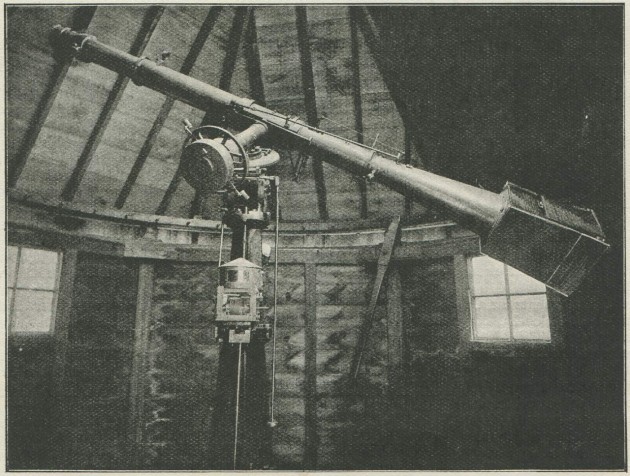
The photoheliograph as used by Annie during her first period of employment. The new secondary magnifier (right) was added on 2 April 1884. Photo by E Walter Maunder. From The Leisure Hour (1898) p.376
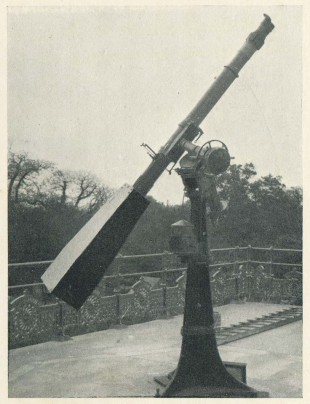
The configuration of the photoheliograph as used by Annie during her second spell at the Observatory. It is seen here on on the roof of the south wing of the New Physical Building soon after a new camera had been fitted. From The heavens and their story, by Annie & E Walter Maunder
Many modern commentators speak of Christie’s social innovation. But in truth, the employment of the Lady Computers was exploitative and little more than a stop-gap measure. By the time Russell resigned, the problem of insufficient numbers of established staff was about to be resolved and no more ladies were appointed. Indeed, those making enquiries were told ‘ladies are no longer employed at the Royal Observatory’. The next time women were employed at the Observatory, was again as Computers, and again out of necessity. But this time it was because of the staffing shortages caused by the First World War. Although Walter had retired in 1913, both he and Annie returned to the Observatory on a voluntary basis in January 1916 to work in the solar department. Although Walter was temporarily reinstated into his former post in April that year, it was only around the time that he retired for a second time on 30 September 1919 that Annie was formally reinstated as a Computer. She resigned in 1920. In the meantime, following a change to the Royal Astronomical Society’s Charter in 1915, she was election as a fellow in 1916. This time around her application was successful.
The above account of Russell has been deliberately kept brief. Much more about her role and those of the other women at Greenwich together with her election to Fellowship of the Royal Astronomical Society (after an initial rejection in 1892) can be read on this page on the website Christie’s ‘Lady Computers’ – the Astrographic pioneers of Greenwich.
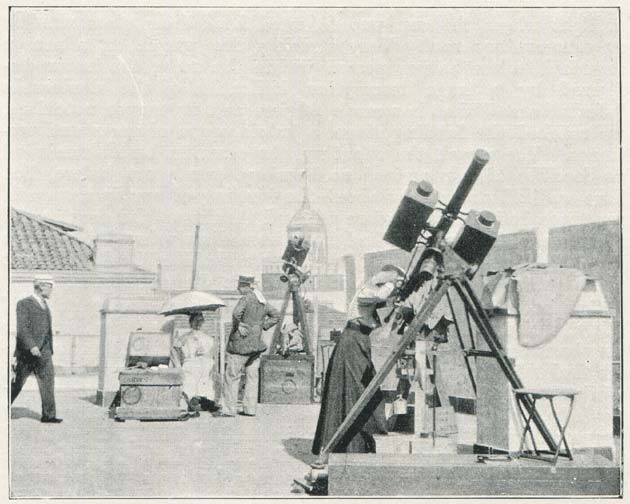
Annie Maunder at her telescope in Algiers during the May 1900 solar eclipse. Photo by H Ellis. From The total eclipse of May 1900 (British Astronomical Association)
Between 1887 and 1895 Walter had lived in a newly built house, Hyde House, in Ulundi Road on the east side of Greenwich Park in close proximity to several of the other Greenwich Assistants, Lewis, Hollis and Crommelin, who all lived in the same road. Following his marriage to Annie, he moved the family about as far away as possible (given the need to be close to his work) to Walerand Road on the Lewisham side of Blackheath well away from the homes of any other staff member. As well as removing themselves from the daily scrutiny of the Observatory staff the Maunders were also able to use a different railway line when travelling up to London. Following two futher moves to houses in Brockley, the Maunders eventually returned to the vicinity of Greenwich Park in about 1911.
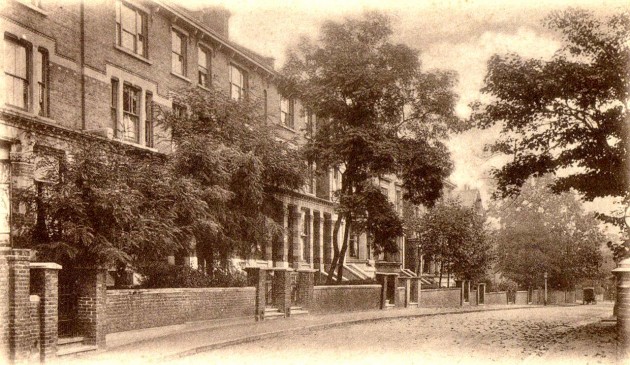
Following their marriage, the Maunders moved into a terrace in Walerand Road, just off Lewisham Hill. Their house (No. 18) was entered by the gate on the left. From a postcard (No. 907) published by Perkins Son & Venimore in about 1904
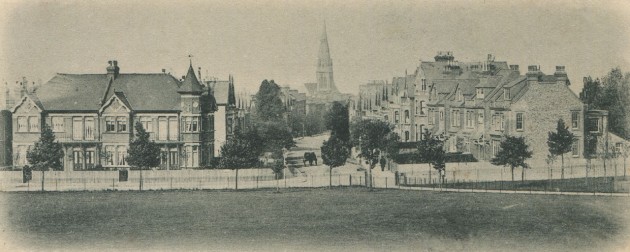
This view looking north along Tyrwhitt Road from Hilly Fields towards St John's Church would have been very familiar to the Maunders, who lived in the road from 1900–11. Hilly Fields, which is in Brockley, features prominently in their book The Heavens and their Story. The spire of the church, which was located in Lewisham High Road (now Lewisham Way) was used as an azimuth mark for Airy's Altazimuth Telescope from 1888 onwards. From a postcard published by Perkins Son & Venimore in about 1903
Obituaries and further reading
Obituary: Maunder, Annie Scott Dill. MA Evershed, Monthly Notices of the Royal Astronomical Society, Vol. 108, pp.48–9 (1948)
Obituary: Mrs. Walter Maunder. MA Evershed. Journal of the British Astronomical Association, Vol. 57, p.238 (1947)
Christie’s ‘Lady Computers’ – the Astrographic pioneers of Greenwich
Lady Computers at Greenwich in the Early 1890s. MT Brück, Quarterly Journal of the Royal Astronomical Society, Vol. 36, p.83– 95 (1995)
Alice Everett and Annie Russell Maunder torch bearing women astronomers. MT Brück, Irish Astronomical Journal, Vol. 21(3/4), pp.281–88 (1994)
The Family Background of Annie S. D. Maunder (née Russell). MT Brück, MT. & S Grew, Irish Astronomical Journal, 1996, 23(1), 55
Women Astronomers in Britain, 1780-1930. Kidwell.P. (1984)
Obligatory amateurs: Annie Maunder (1868–1947) and British women astronomers at the dawn of professional astronomy. M.B. Ogilvie (2000)
© 2014 – 2025 Graham Dolan
Except where indicated, all text and images are the copyright of Graham Dolan